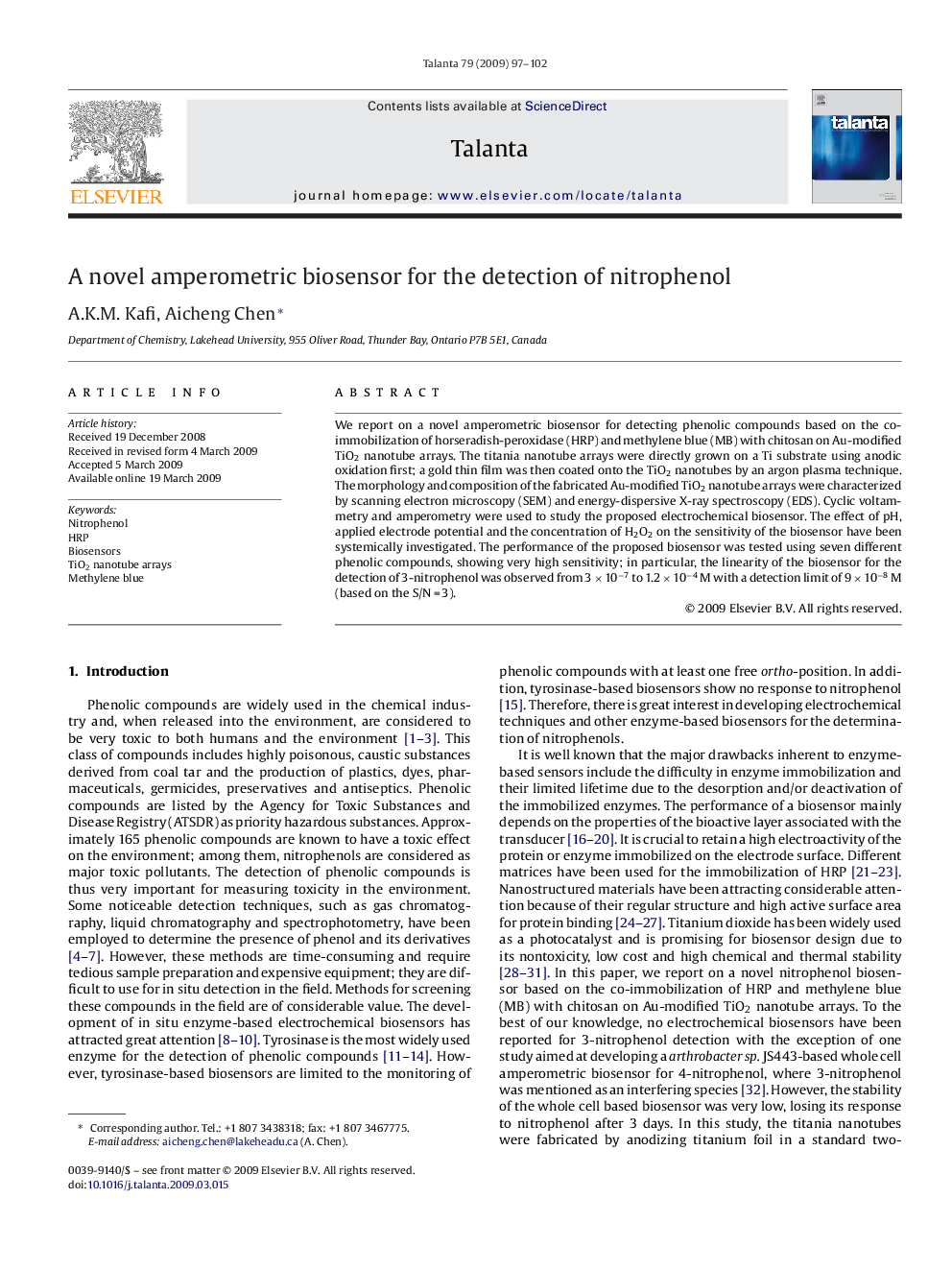| Article ID | Journal | Published Year | Pages | File Type |
|---|---|---|---|---|
| 1242886 | Talanta | 2009 | 6 Pages |
We report on a novel amperometric biosensor for detecting phenolic compounds based on the co-immobilization of horseradish-peroxidase (HRP) and methylene blue (MB) with chitosan on Au-modified TiO2 nanotube arrays. The titania nanotube arrays were directly grown on a Ti substrate using anodic oxidation first; a gold thin film was then coated onto the TiO2 nanotubes by an argon plasma technique. The morphology and composition of the fabricated Au-modified TiO2 nanotube arrays were characterized by scanning electron microscopy (SEM) and energy-dispersive X-ray spectroscopy (EDS). Cyclic voltammetry and amperometry were used to study the proposed electrochemical biosensor. The effect of pH, applied electrode potential and the concentration of H2O2 on the sensitivity of the biosensor have been systemically investigated. The performance of the proposed biosensor was tested using seven different phenolic compounds, showing very high sensitivity; in particular, the linearity of the biosensor for the detection of 3-nitrophenol was observed from 3 × 10−7 to 1.2 × 10−4 M with a detection limit of 9 × 10−8 M (based on the S/N = 3).
